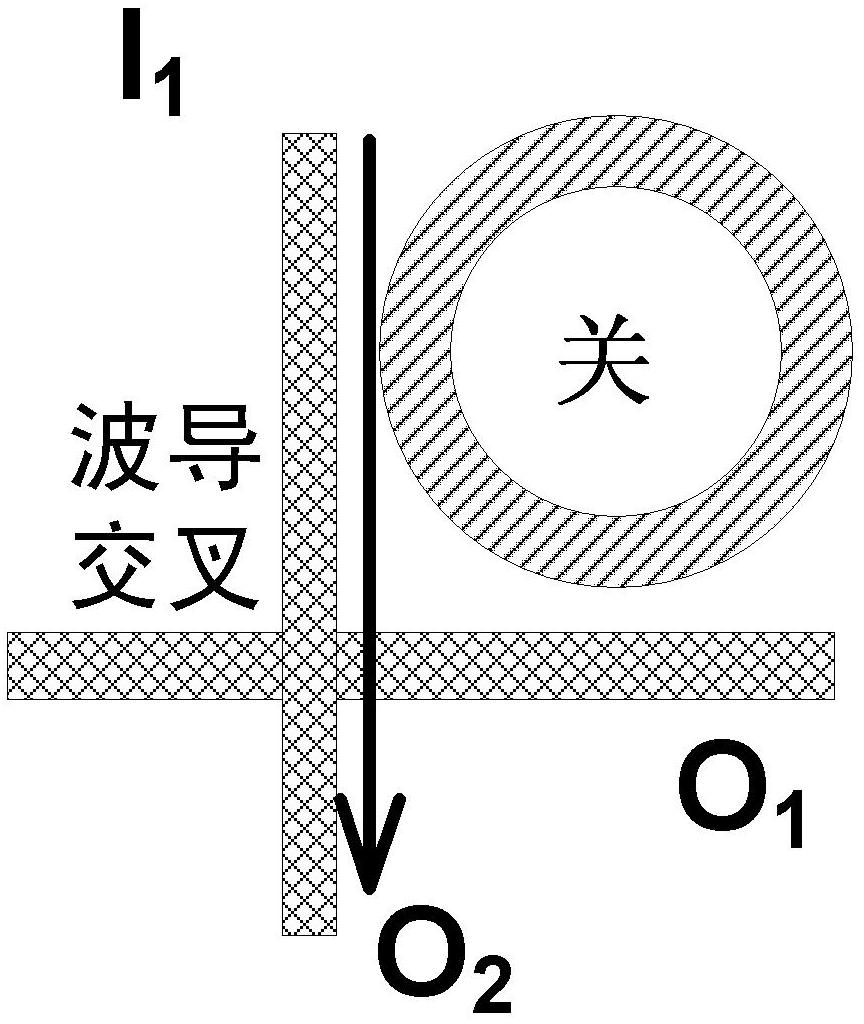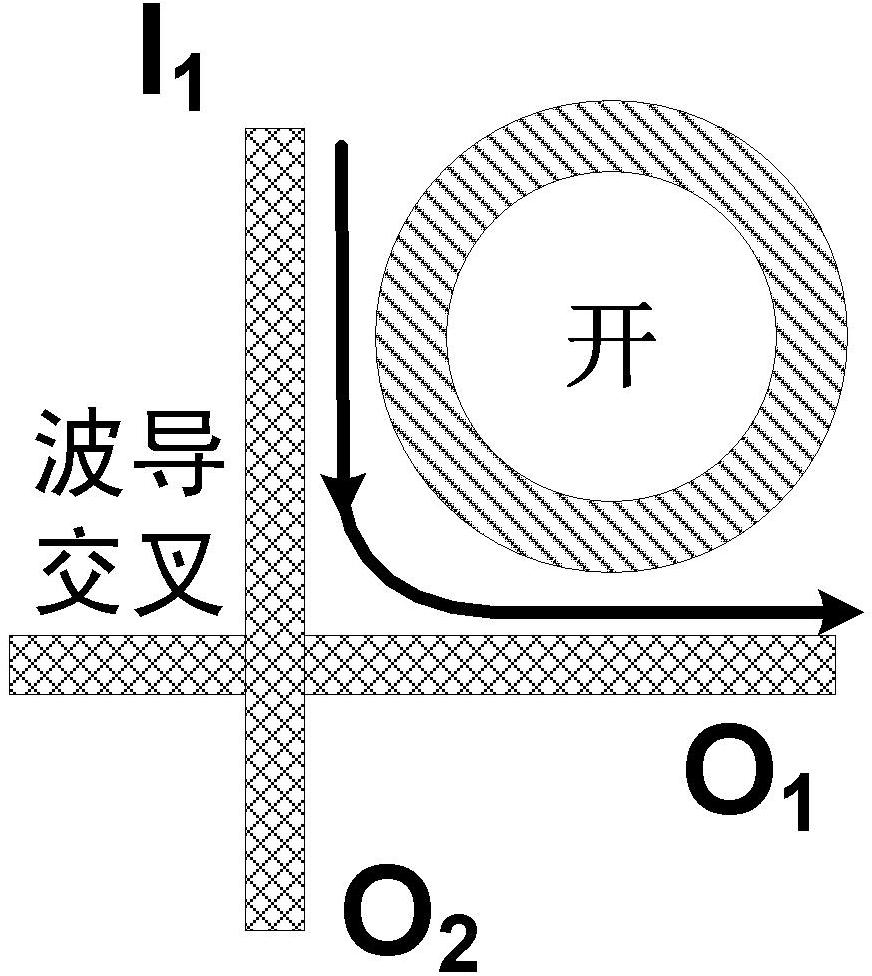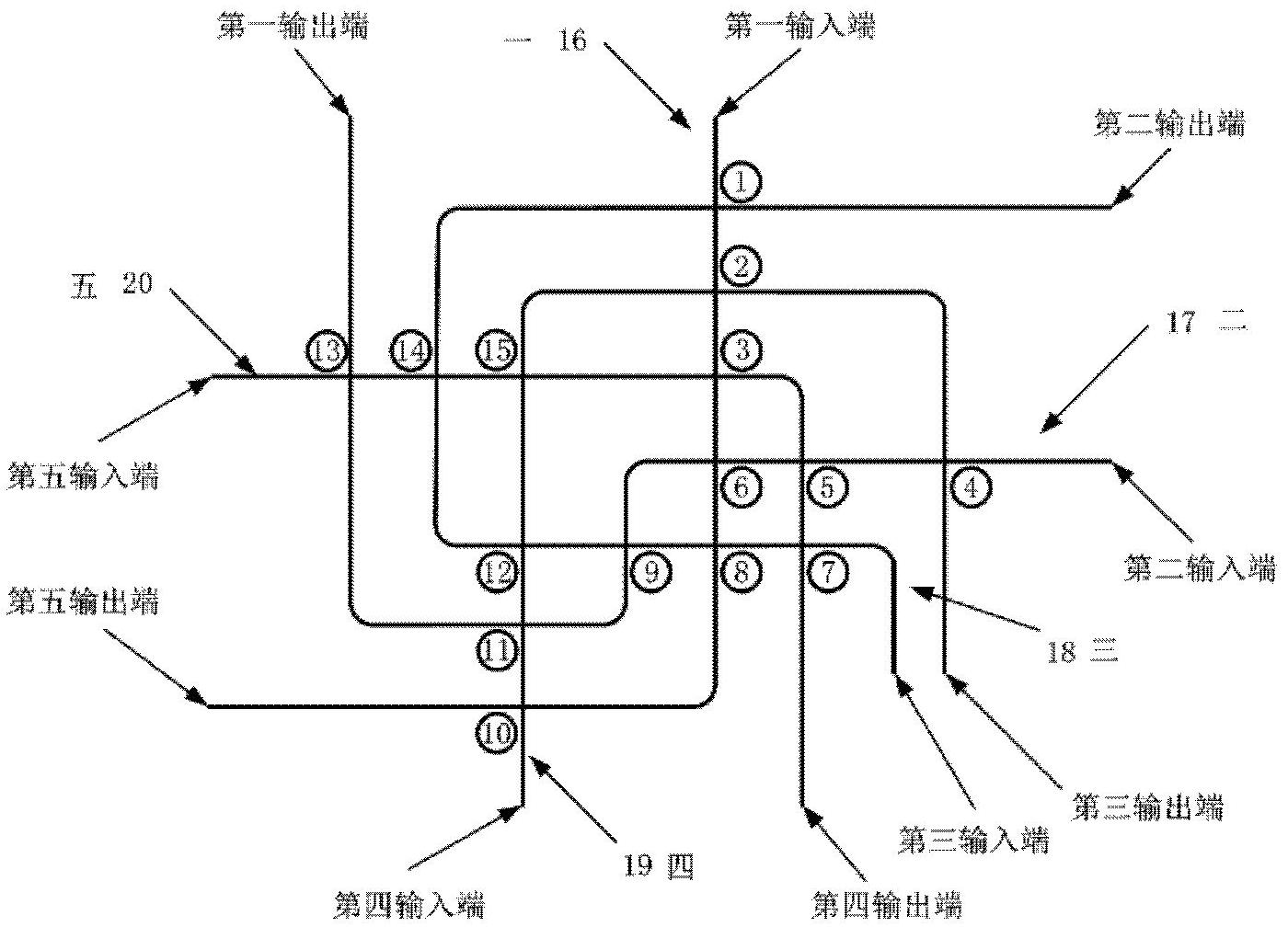Five-port nonblocking optical router based on micro-ring resonators
A microring resonator, non-blocking technology, applied in the field of node interconnection, can solve the problems of limited bandwidth, poor scalability, high delay, etc., to reduce average loss and crosstalk, improve scalability, and reduce device power consumption Effect
- Summary
- Abstract
- Description
- Claims
- Application Information
AI Technical Summary
Problems solved by technology
Method used
Image
Examples
Embodiment Construction
[0024] In order to make the object, technical solution and advantages of the present invention clearer, the present invention will be described in further detail below in conjunction with specific embodiments and with reference to the accompanying drawings.
[0025] First, the operating principle of the microring resonator is described. Such as Figure 1a as shown, Figure 1a is a schematic diagram showing that the wavelength of the input light wave is not equal to the resonant wavelength of the microring resonator, Figure 1b is a schematic diagram where the wavelength of the input light wave is equal to the resonant wavelength of the microring resonator. When the input wavelength is not equal to the resonant wavelength of the microring resonator, the optical signal will be at O 2 output, otherwise it will be in O 1 output. The resonant wavelength of the microring resonator can be changed by applying a voltage to the microring resonator, that is, the switching state of the...
PUM
 Login to View More
Login to View More Abstract
Description
Claims
Application Information
 Login to View More
Login to View More - R&D
- Intellectual Property
- Life Sciences
- Materials
- Tech Scout
- Unparalleled Data Quality
- Higher Quality Content
- 60% Fewer Hallucinations
Browse by: Latest US Patents, China's latest patents, Technical Efficacy Thesaurus, Application Domain, Technology Topic, Popular Technical Reports.
© 2025 PatSnap. All rights reserved.Legal|Privacy policy|Modern Slavery Act Transparency Statement|Sitemap|About US| Contact US: help@patsnap.com



